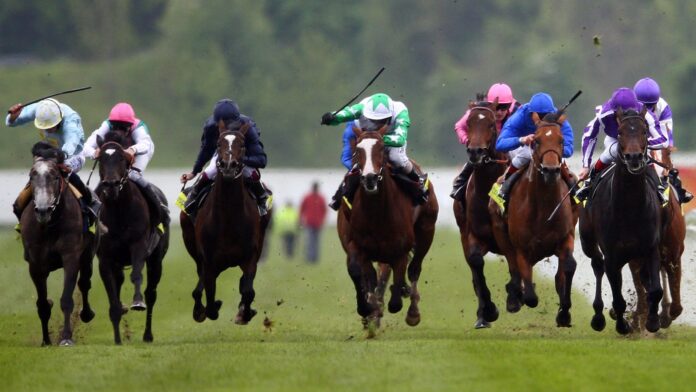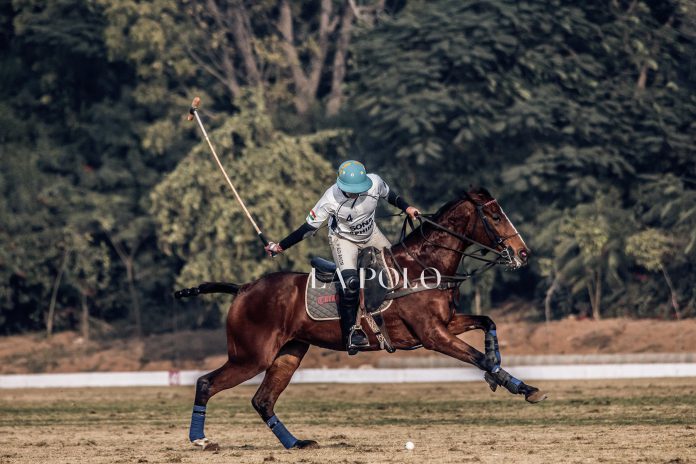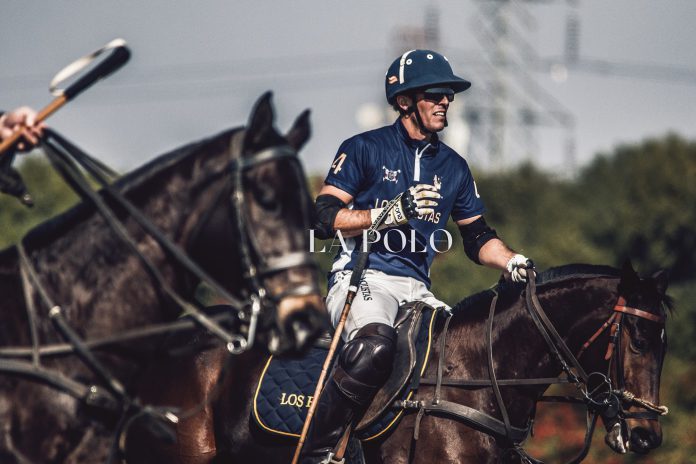The equestrian horse performance sport, horse racing involves two or more horses competing over a specified distance to claim every possible coveted title, they have trained and aimed for.One of the most ancient sports,horse racing has widely been adapted in various nations, to cater efficiently to their own unique audience. The introduction of obstacles, and categorization of races according to various breeds and distances has ensured a smooth execution of the various formats.Established as a prestigious sport, horse racing is also marked by the elite crowd which witnesses with enthusiasm and gallops high on the rich history associated with its existence. LA POLO brings to you, the upcoming horse race in 2020.
“A horse gallops with its lungs, preserves with its hearts and wins with its character.”
Grand National :
The first upcoming horse race in 2020 that you need to watch out for is a National Hunt Horse race held annually at Aintree Racecourse, it is a handicap steeplechase over a distance of 4 miles and 514 yards ( or 2 and a half furlongs) with horses crossing 30 fences, taking two laps each to compete for victory. It has been a regular broadcast live on free-to-air terrestrial television in the United Kingdom since 1960, which was then broadcast by BBC since 2012. The broadcasting reins changed hands in 2013 where Channel 4 took the command till 2017.
History:
The Grand National can be located in the early 1800s and the first races were organized at aintree. Formerly known as the Grand Liverpool Steeplechase, the first winner of this race was decided in February 1839, which was judged by the ability of the horse to jump a stone wall, cross as ploughed land and finish the race by completing the two meticulously designed hurdles. The topham family is responsible for turning this prestigious race into a handicap in 1843. The owners of substantial tracts of land around the aintree bought the course outright from Lord Sefton from whom the land had been leased since the race course’s opening in 1829. This race serves as a crucial factor for many riders. It was almost 40 years ago that Red Rum recorded the first of the three victories in the Grand National that made him the only horse to have won the coveted title thrice and currently holds the title till date. The post war years led to serious concerns about the future of the Grand National until 1984 when Seagram Distillers took over the reins, providing a solid foundation for the Aintree’s comeback. The 2014 tournament flaunted a seven figure prize fund for the first time and has been going ever since then, promoting new talents on the venture.
Winner:
The winner of this prestigious tournament was Tiger Roll, who clinched the title for the second time, maintaining his streak.Its rider, Davy Russell has always maintained a good track record with the polo ponies and feels that Tiger had been a bonus to his prepping skill. The tournament witnessed 40 participants out of which only 19 made it to the finishing line with Magic of Light and Ruby Walsh securing the second and third positions respectively.
Scottish Grand National:
A grade 3 National Hunt Steeplechase in Britain which has an age bar for horses of over five years and more, is what is second on our list of upcoming horse races in 2020. It is run at Ayr, Scotland over a distance of 3 miles and 176 yards which requires 27 fences to be crossed over. Scheduled for the month of April every year, it is held during the two-day Scottish Grand National Festive meeting.
History:
Formerly known as the “West of Scotland Grand National”, it was first scheduled near Houston, Renfrewshire in 1858, which consisted of 32 jumps, usually stone walls. The race was moved to Bogside Racecourse, near Irvine post the objections from the leader of the Free Kirk in Houston. The first winner of the Championship was, The Elk owned by the Duke of Hamilton. The stretch of the race was improvised from 3 to 3 miles and 176 yards and the present title was bestowed upon it in 1880 which was then won by Peacock.The Bogside Racecourse was closed down in 1965 and the Scottish Grand National was then relocated to Ayr. The Scottish Grand National winners have also left their mark on its English counterpart at Aintree. The first winner to clinch both the titles was Music Hall in 1922 and has been refreshed by Red Rum in 1974.
Winner:
The winner of 2019 Scottish Grand National 2019 was Taking Risks ridden by Sean Quinlan. The 25/1 triumphed in the 3.35 at Ayr with Crosspark coming in second with 10/1.
Guineas Stakes:
A Group 1 flat horse race which allows three year old thoroughbred colts to compete, it is run on the Rowley Mile at Newmarket over a distance of 1 mile and is generally organized during the months of April and May. Guineas Stakes is what is on our list next to the upcoming horse race in 2020. Deemed as one of the five Classic races, it generally marks the opening of the Triple Crown. The extraordinary feat of winning all the three races of the Triple Crown has hardly been attempted.
History:
The first Guineas Stake race was organized in 1809 and served as an introduction of a fillies only race, the 1000 Guineas stakes.the founder of these races was by Sir Charles Bunbury, who had earlier co-founded the Derby By mid 1860s, the 2000 guineas stakes were regarded as one of the most prestigious races of the Great Britain for the three year olds. The leading events for this age group characterized by increasing distances was a pattern that was later adopted by other nations. The various versions of the Guineas Stakes include the Irish 2000 Guineas, the Poule d’Essai des Poulains, the Premio Parioli and many more. The trial races such as the Craven Stakes and the Greenham Stakes are most often the debut races for many horses. The last horse to win both these happening races was Camelot in 2012. The 2000 Guineas offers a prize money of £523,750, equal to that of the 1000 Guineas Stake.
Winner:
For the past three years, the same trainer Aidan O’Brien’s has won the race,a first of its kind in almost 200 years, saddling Magna Grecia, making him the 10th winner of this Classic on Saturday.O’Brian has won half of the Classics run in Britain, 13 out of 26.
Kentucky Derby Festival:
Kentucky Derby Festival is the annual festival held in Louisville during the two weeks precursor to the first Saturday in May. With a diversity of more than 70 events, the activities comprise of events that satisfy the likes of the local residents and visitors, alike. With an attendance of more than 1.5 million for the festival, people from all geographic locations turn up for this extravagant event.
The festival started in 1935 and ran till 1937 post which the festival was restarted in 1956 and includes The Great Steamboat Race, the Pegasus Parade etc.
Read what happened last year: https://www.lapolo.in/blog/historic-affair-disqualification-kentucky-derby/
Dante Festival:
Dante Festival, a Group 2 flat horse race valid for three-year-old horses in Great Britain, involves covering a distance of 1 mile, 2 furlongs and 56 yards (2,063 metres) at York. It is usually organized in May and that is what is on our list of upcoming horse race. The Dante Stakes is currently staged on the second day of York's three-day Dante Festival meeting.
History:
The race is named after Dante, the Yorkshire-trained winner of the Derby substitute in 1945 and serves as an ode to the legend for his contribution to the sport. It was established in 1958 and is seen as a major trial for the Derby. The first winner of the race was Bald Eagle. The present race system of grading was introduced in 1971 and in 1980, the event was promoted from group 3 to Group 2 level. Only ten winners of the race have achieved victory in the Derby with St Paddy being the first winner in 1960. The prize money over the three days of the Dante Festival is £1.2m and every race is worth £20,000 or more.
Dante Festival:
Dante Festival, a Group 2 flat horse race valid for three-year-old horses in Great Britain, involves covering a distance of 1 mile, 2 furlongs and 56 yards (2,063 metres) at York. It is usually organized in May and that is what is on our list of upcoming horse race. The Dante Stakes is currently staged on the second day of York's three-day Dante Festival meeting.
History:
The race is named after Dante, the Yorkshire-trained winner of the Derby substitute in 1945 and serves as an ode to the legend for his contribution to the sport. It was established in 1958 and is seen as a major trial for the Derby. The first winner of the race was Bald Eagle. The present race system of grading was introduced in 1971 and in 1980, the event was promoted from group 3 to Group 2 level. Only ten winners of the race have achieved victory in the Derby with St Paddy being the first winner in 1960. The prize money over the three days of the Dante Festival is £1.2m and every race is worth £20,000 or more.
Royal Ascot:
The British Racecourse located in Berkshire is considered a leading racecourses in the United Kingdom, often used for hosting Grade 1 thoroughbred horse racing.The course is owned by ascot Racecourse Ltd. and is associated with the British Royal Family. It hosts 26 days of racing, apart from 18 flat meetings between the months of May and October. The much awaited race of the entire tenure is the acclaimed King George VI and Queen Elizabeth Stakes organized in July.
History:
Founded in 1711 by Queen Anne, the first race was organized on 11 August in 1711, with seven horses competing over four miles. The 1813 Parliament Act passed by the Parliament ensured that the race grounds would remain a public property. The new grandstand was opened in 1839 at a cost of £10000. In 1913, through the further intervention of the Parliament, the Ascot Authority was established as an organized body to handle the racecourse. Till 1945, only the Royal Meeting, a four day event was held at the Ascot and since then more notable events like the National Hunt Racing, which was established in 1965, arrived at the location. The racecourse was closed in 2004 for twenty months for redevelopment, funded by the Allish Irish Bank. The new grandstand, opened in 2006, received criticism for failing to provide raised platforms for patrons to watch over the race, and providing too much space for capitalist oriented spaces like restaurants and bars. Another £10 million programme was announced for introducing alterations, however the upper levels still provide less accommodation for the regular racegoer than was present in the previous stand.
Winner:
Stradivarius has retained the Royal Ascot Gold Cup, making it four wins from as many races on day three for Frankie Detorri. Stradivarius was priced at 11/8 at the start of the day but fell to events at the off after Dettori won on A'Ali, Sangarius and Star Catcher ahead of the week's feature race.
Read more about what happened in 2018: https://www.lapolo.in/blog/royal-ascot-gold-cup-2018-stradivarius-wins/
Northumberland Plate:
It is a flat handicap horse race in Great Britain valid for horses aged three years and above, who run over a distance of two miles and 56 yards and is usually scheduled in late June or early July. It is one of the richest two mile handicaps and was sponsored by John Smith from 2003 to 2006. It is currently being sponsored by Betfair.
History:
Established in 1833, it was initially organized in Town Moor and was won by Tomboy. In 1882, it was then transferred to its present venue at Gosforth Park. The race was popularly known as ‘Pitmen’s Derby’ and was usually a holiday for the local mine workers. The practise however ceased in 1949 and was shifted to a Saturday in 1952.
July Cup:
Next in our list of upcoming horse race in 2020 is a Group 1 flat race open to horses aged three years or older in Great Britain, this is usually scheduled in July on July course over a distance of 6 furlongs (1,207 metres), Acclaimed as Britain's most valuable sprint races,many of its winners have been acknowledged as the champion sprinter in Europe. The race is held on the final day of Newmarket's three-day July Festival meeting.
History:
Established in 1876, the first two runnings of the event were won by Springfield, a colt bred by Queen Victoria at the Hampton Court Stud.The year 1971 brought the present system of race grading, and the July Cup which was initially classed at Group 2 level was then promoted to Group 1 status in 1978.The Cup has been a part of the Global Sprint Challenge from 2008 to 2017 and was included in the sixth leg of the series, preceded by the Diamond Jubilee Stakes.
Winner: Ten Sovereign clinched the title in 2019 to their credit with an astounding rating of 5.79.
Ebor Festival:
A four day race meeting organized at York Racecourse in England every August, the Ebor festival which was established in 1843 is now a regular feature in the racing calendar every year. The four days have distinctive races lined up with the Great Voltigeur Stakes and the Acomb Stakes being scheduled for the first day. The second day, is called the Ladies Day and is marked by the Lowther Stakes and the Yorkshire Oaks, while the third day features Nunthorpe Stakes, the Strensall Stakes and the Gimrack Stakes. The final day closes with the Ebor Handicap and the Lonsdale Cup.
Winner:
Mustajeer holds off challengers to win Ebor for Ger Lyons with a 16-1 shot and becomes first to win £1 million on Flat in Britain
Haydock Sprint Club:
A Group 1 flat horse race in Great Britain which allows thoroughbreds aged three years or older to compete at Haydock Park over a distance of 6 furlongs (1,207 metres) and is generally scheduled to take place each year in early September. The Sprint Cup is currently sponsored by 32 Red. Let’s move ahead to know the history of the Sprint Club, that’s what is on our list of upcoming horse race in 2020.
History:
Established in 1966, it was originally applicable to horses aged two or older. The club was planned by Robert Sangster, who was a pioneer racehorse owner/breeder. Initially, the race was sponsored by Vernons and scheduled in November. It was planned to be held on a sharp left bend. in 1979, the tournament was preponed to September and was repositioned to Haydock's 6-furlong straight track in 1986. In the final year of Vernons' sponsorship, 1988, the tournament was promoted to Group 1 status.
Ayr Gold Cup:
A flat handicap race in Great Britain applicable to aged three years or older, the horses compete at Ayr over a distance of 6 furlongs. The tournament is usually scheduled in September every year and it is a must watch and that’s why it made a place in our list of upcoming horse race in 2020.
History:
Established in 1804, the tournament is held at Ayr's former racecourse at Belleisle. Initially restricted to horses bred and trained in Scotland and contested over two separate tracks of two miles, the format was later merged and resulted in a single race with a two-mile distance. The Cup became a handicap in 1855, and it was reduced to about a mile in 1870. The lightest winning weight in the race is 6 st 13 lb (44 kg) which was carried to victory by Marmaduke Jinks in 1936. The heaviest is 10 st (63½ kg), the burden of Roman Warrior in 1975. The field for the Ayr Gold Cup is set from the highest-weighted horses entering for the race and the maximum number of runners is currently twenty-seven. The eliminated horses are given a chance to prove their mettle by competing in the Ayr Silver Cup, introduced in 1992. An event for horses excluded from the Silver Cup race, the Ayr Bronze Cup, was established in 2009.
Winner:
Tom Dascombe had never trained a William Hill Ayr Gold Cup winner before, and Richard Kingscote had never ridden one, but that was put to rest when the three-year-old Angel Alexander finished off his race strongly under Kingscote to get home by half a length and claim the 2019 Ayr Gold Cup.
British Champions Day :
A thoroughbred horse race meeting held at Ascot Racecourse since 2011, it acts as the end of season highlight of British flat racing. It is the end of the British Champions series and features the finals of the series, together with a prestigious one-mile handicap race. Considered as the richest day in British racing, it boasts of more than £4 million in prize money.
History:
The foundation of this race was laid through the amalgamation of the various features of Ascot and Newmarket’s end season meetings.The Diadem Stakes and Queen Elizabeth II Stakes from Ascot,the Champion Stakes, the Jockey Club Cup and Pride Stakes from Newmarket became the finals of each of the divisions of the British Champions Series, in the new revised plan.
The Queen Elizabeth II Stakes and Champion Stakes retained their names and became the finals of the Mile and Middle Distance divisions respectively. The Diadem Stakes became the British Champions Sprint, the Jockey Club Cup became the British Champions Long Distance Cup, and the Pride Stakes became the British Champions Fillies' and Mares' Stakes.
Betfair Chase:
A Grade one National Hunt steeplechase in Great Britain which is valid to horses aged five years and above,which is usually organized at Haydon Park over a stretch of about 3 miles and 125 yards and involves nineteen fences to be jumped over. It is now the first Grade 1 event of the British National Hunt season.The race is usually scheduled to take place in November, each year.
History:
Established in 2005,The original Lancashire Chase was first run at Manchester Racecourse in 1884. It originally served as the initial leg of a bonus scheme known as Betfair Million. The sponsor, Betfair, gave a sum of £1,000,000 to its leading contenders for successful performances in two subsequent races.
The initial version of the Betfair Million was designed in such a way that the winner of the Betfair Chase went on to win both the King George VI and the Cheltenham Gold Cup. The format was improvised in 2008–09, when the bonus was made available to any first-three finisher achieving first or second at the Cheltenham Festival and then the Grand National following which The Betfair Million was dropped. The last horse to win the Stayers Triple Crown was Kauto Star in 2006/07, with Paul Nicholls’ superstar taking the Betfair Chase on no less than four occasions in total.The bonus was returned as the "Chase Triple Crown" in 2015 when Jockey Club Racecourse offered it to any horse winning the race, the King George VI Chase and Cheltenham Gold Cup, shortly won by Cue Card in 2015–16 bonus. The Betfair Chase is usually known by its sponsored name, but the registered title is the Lancashire Chase.The original Lancashire Chase was first run at Manchester Racecourse in 1884.
Coral Welsh Grand National:
A grade 3 National Hunt steeplechase open to horses aged four years and above, the competition stretches over a distance of over three miles and 130 yards, which involves jumping over 23 fences and is organized at Chepstow, Wales.It is usually scheduled in december. .
History:
The race was first organized in 1895 and the debut location was Ely Racecourse in Cardiff, which was associated with the event till 1939. Post World War II, it was relocated to Caerlon in 1948 and was moved to its present venue in 1949. Dick Francis was the first winner of the race, and David Nicholson later joined the league of successful racehorse trainers who rode three successive Welsh winners in 1959, 1960 and 1961. It was moved to February 1969 but poor weather conditions forced its cancellation. In 1979, it was moved to late December and but was abandoned again due to snow. It is now held after Boxing Day, which has witnessed an improvement in the class of runners joining the wagon of competitors. .In the late 80s and early 90s, the race was dominated by Somerset trainerMartin Pipe. Bonanza Boy achieved consecutive successes in 1988 and 1989, and in 1991 the giant Carvill's Hill became one of the easiest winners in the history of the race.
Winner:
Wales rugby star Jonathan Davies' racehorse Potters Corner is the winner of the 2019 Welsh Grand National. Jockey Tudor said: "When you're Welsh, to win a Welsh National is one of the things you look forward to when you're a kid and when it comes true it's brilliant.
These are the most happening races in the field that you should definitely look out for. So grab a seat and witness the most exciting and happening competitions.
Doncaster Cup
This is a Group 2 flat horse race in England that is open to horses of ages three years or older. It takes place at Doncaster across a block of 2 miles 1 furlong and 197 yards (3,600 meters) and takes place in September every year as the schedule.
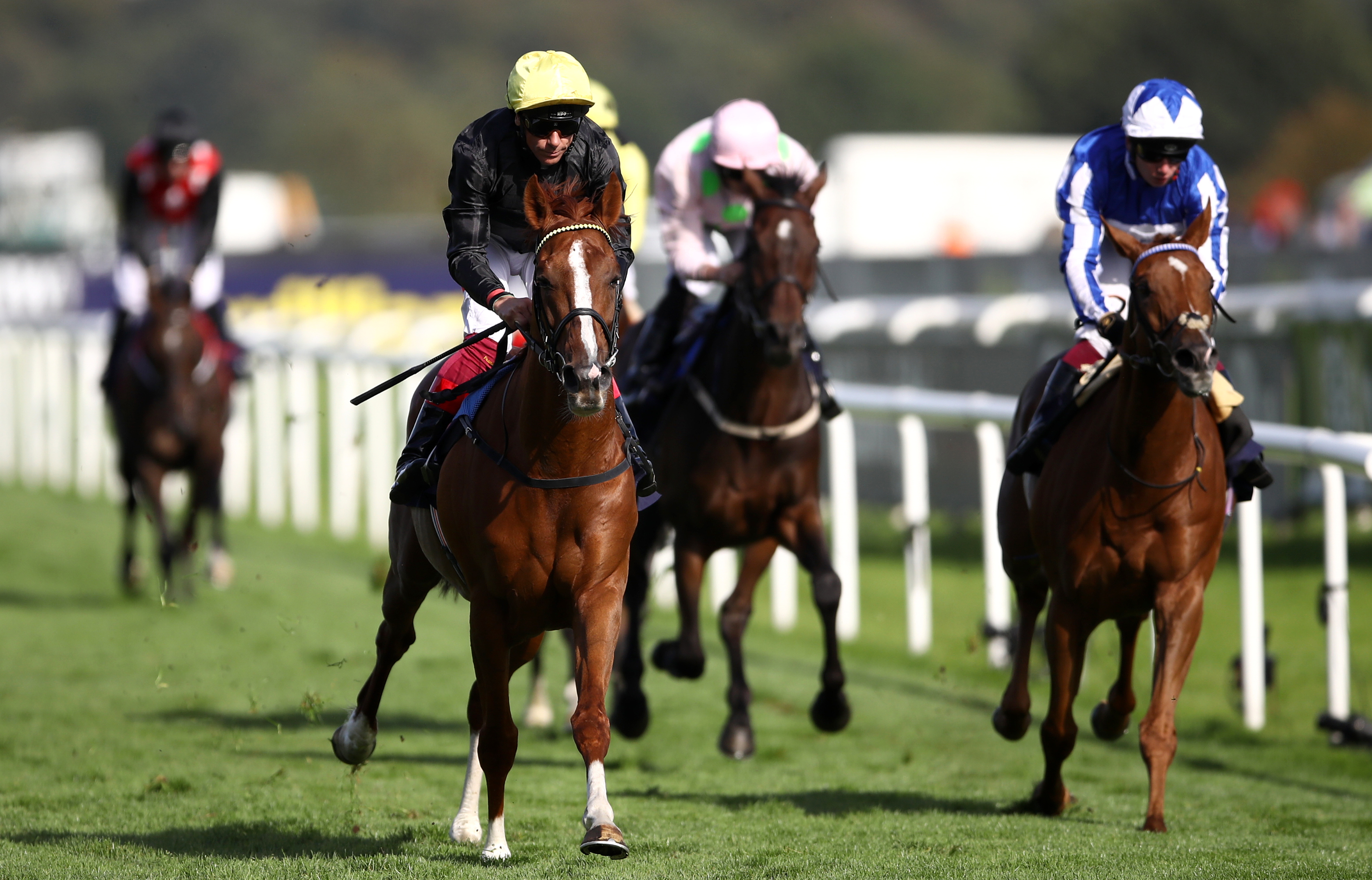
History:
This race was Instituted in 1766 and was formerly named the Doncaster Gold Cup. This is the oldest surviving race in history and foreshadows Doncaster's St. Leger Stakes by at least ten years. It was originally held at Cantley Common and was shifted to its existing location in 1776.
Previously the race was run over 4 miles and then it was shortened to 2 miles and 5 furlongs in 1825, and further decreased to 2 miles and 2 furlongs in 1891. It was chopped by another furlong in 1908 and returned to its former range in 1927.
Dewhurst Stakes
This is a Group 1 flat horse race in Britain permitted only to two-year-old horses and fillies. It is contested on the Rowley Mile at Newmarket across a span of 7 furlongs (1,408 meters), and it takes place every time in October as scheduled.
It happens to be Britain's one of the most esteemed races for younger horses. The dominating participators mostly become primary competitors for the coming season's Classics.

History:
This competition was established by Thomas Gee, who was a dear comrade of Karl Pearson's dad. This race was instituted in 1875 and was formerly named the "Dewhurst Plate". It was called after Gee's Dewhurst Stud at Wadhurst. All first four champions went on to acquire one or more titles of the following year's Classics.
In 2011 the Dewhurst Stakes was summed to the Breeders' Cup Challenge series. The winner of the cup was awarded an intuitive invite to race in the Breeders' Cup Juvenile Turf. It was withdrawn from the group in 2012 though.
Eclipse Stakes
The Eclipse Stakes is a Group 1 flat horse race in England and is only permitted to horses of ages three years or older. This race is held at Sandown Park across a span of 1 mile, 1 furlong and 209 yards (2,002 meters), and happens every year in early July as scheduled.
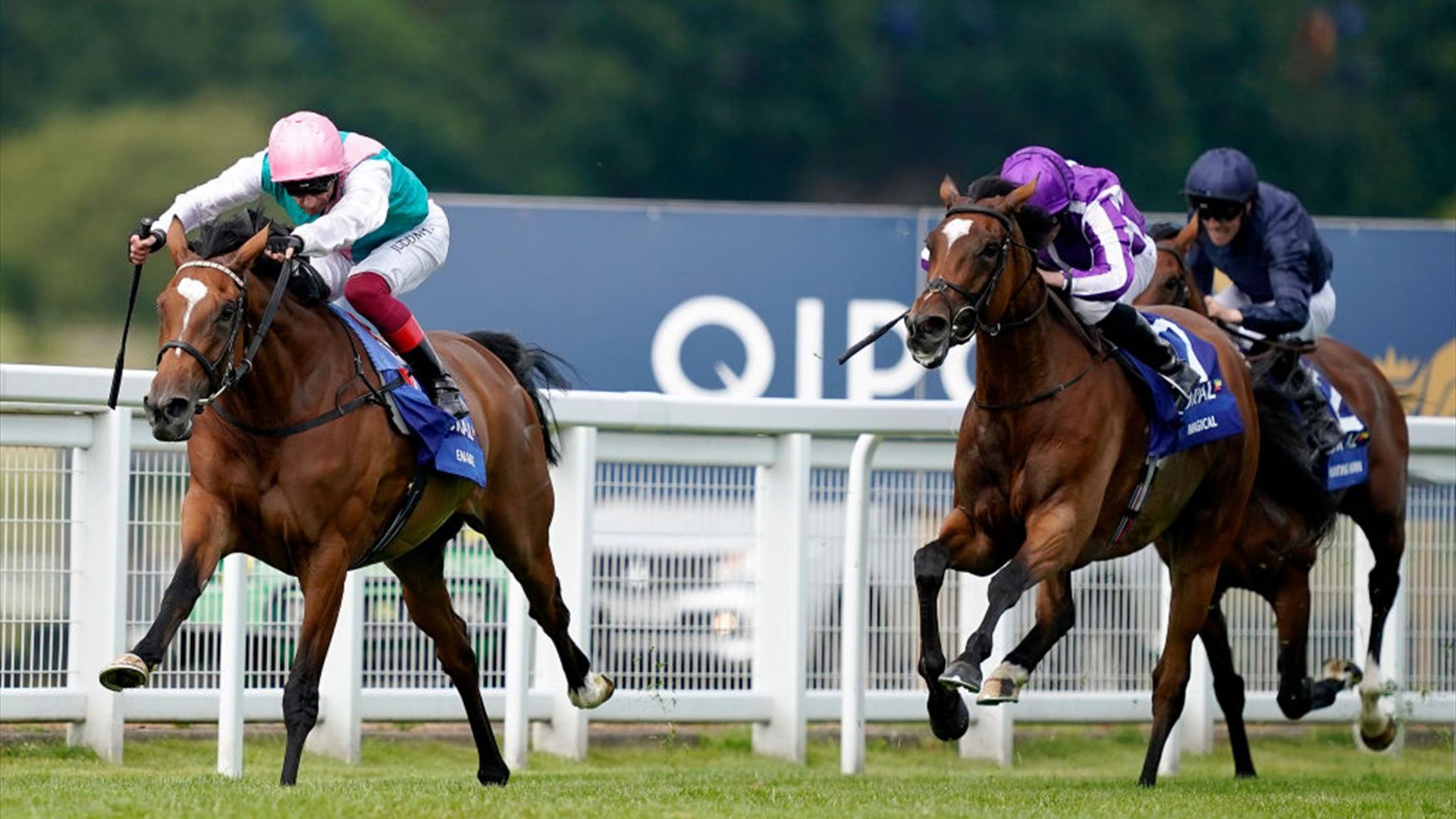
History:
The race is titled after Eclipse, which was a well-known 18th-century racehorse. It was founded in 1886, and the opening race was won by Bendigo. It was Britain's richest race during that period of time. The prize capital of £10,000 was provided by Leopold de Rothschild at the behest of General Owen Williams, who was a joint founder of Sandown Park.
Winner:
This particular race has been financed by Coral ever since 1976 and is now commonly called the "Coral-Eclipse". The current Classic winner to obtain triumph was Enable, who is the former 2017 Epsom Oaks winner, in 2019.
Goodwood Cup
This cup is a Group 1 flat horse race held in Great Britain and unrestricted to horses of ages three years or older. Goodwood Cup is held at Goodwood across a span of 2 miles (3,219 meters) and is going to take place in late July or early August just like every year.
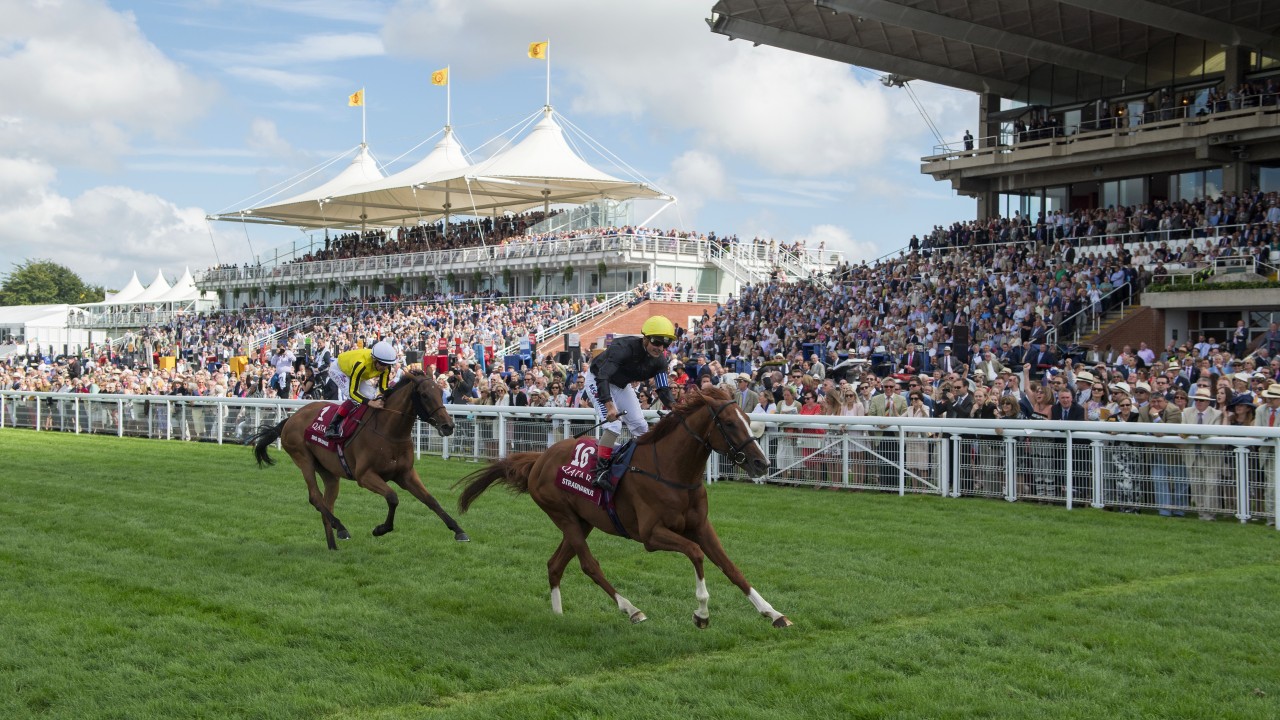
History:
The initial version of the Goodwood Cup was founded in 1808 and was obtained triumph on not one but three different instants by Bucephalus. Its trophy is a silver cup, which was then granted forever to the horse's keeper after his third winning. The successor trophy was a gold one, and its opening running took place in 1812. The Goodwood Cup was initially raced across 3 miles, but it was later chopped to 2 miles and 5 furlongs.
International Stakes
This horse race is a Group 1 flat horse race that takes place in Great Britain and only horses of ages three years or older can participate in it. The International Stakes is held at York across a span of 1 mile, 2 furlongs and 56 yards (2,063 meters), and it set to happen in August just like every year.
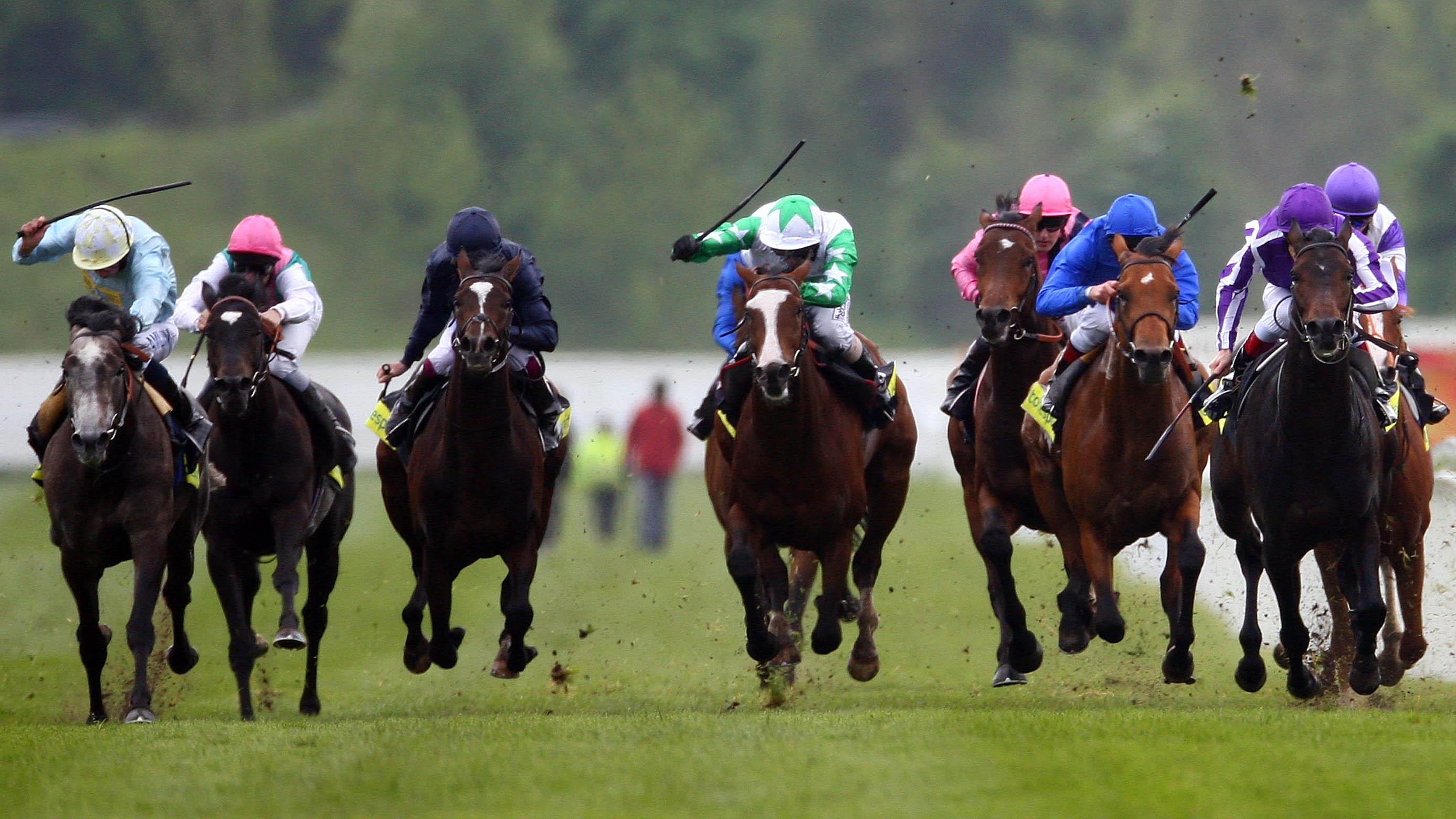
History:
This championship was founded by Major Leslie Petch, a retired Secretary of the Track at York. It was first conducted in 1972, and by that point, Petch had already retired from his post due to his poor health. International Stakes was formerly financed by Benson and Hedges and titled the Benson and Hedges Gold Cup. The opening race was secured by Roberto, who also happens to be that year's Derby champion.
The International Stakes is presently organized on the first day of York's four-day Ebor Festival. It is also the location's most expensive race.
King George VI and Queen Elizabeth Stakes
This race is a Group 1 flat horse race that takes place in good old England and is permitted to only horses of ages three years or older. King George VI and Queen Elizabeth Stakes is held at Ascot across a span of 1 mile 3 furlongs and 211 yards (2,406 meters) and will take place in July just like every year.
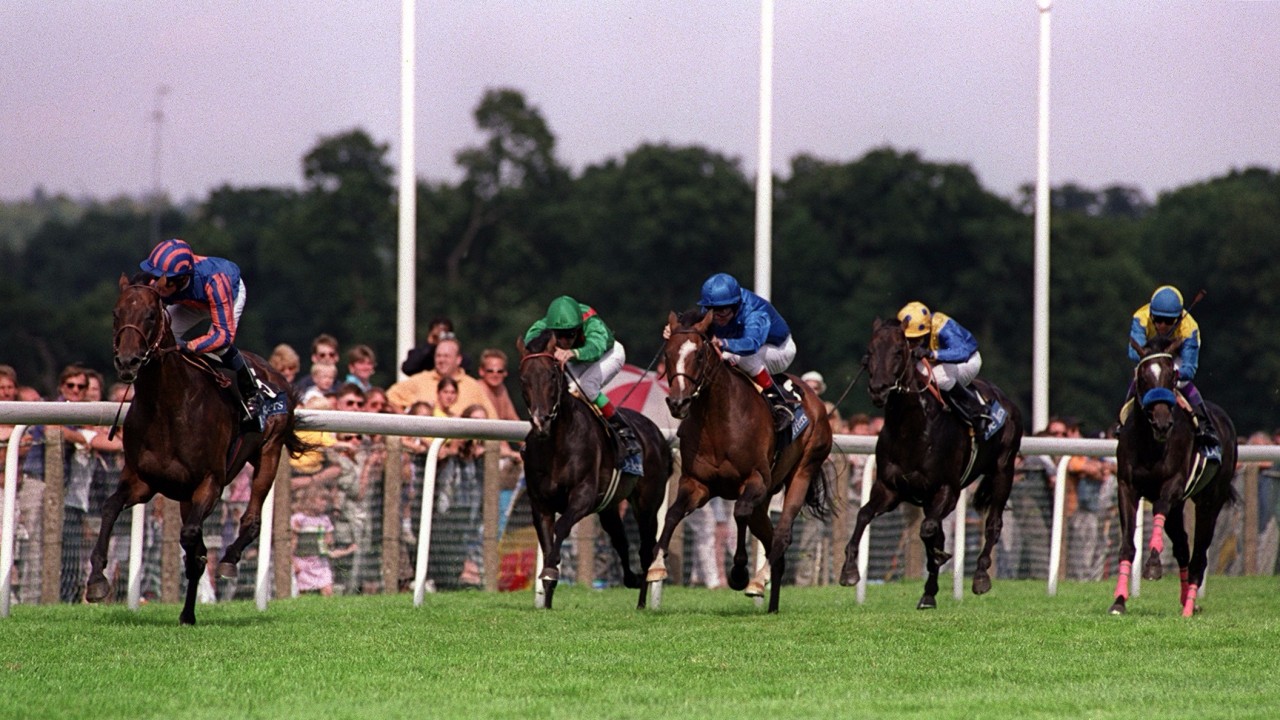
History:
This race was started as the outcome of a merger of two different races at Ascot which were founded in 1946 and 1948. The first race was titled after King George VI and was a 2-mile competition for three-year-old horses organized in October. The second race was started in celebration of his spouse, Queen Elizabeth, and it was a one and a half-mile race held in July. The concept was formulated by Major John Crocker Bulteel, the Secretary of the Track at Ascot, who desired to devise an outstanding international event across one and a half miles only for horses of ages three or older. The opening run of the combined race happened on 21st July 1951.
It is now Britain's second most expensive horse race, with a purse surpassed only by that of The Derby.
A BONUS
Epsom Derby
The Derby Stakes, formally known the Investec Derby, and commonly known as the Derby is a Group 1 flat horse race in Great Britain only permitted to horses of ages three-year-old. Epsom Derby is held at Epsom Downs Racecourse situated in Surrey across a span of one mile, four furlongs and 6 yards (2,420 meters), on the first Saturday of the month of June every year.
Epsom Derby happens to be Britain's most expensive horse race and the most reputable among all of the five Classics. It is also seldom mentioned as the "Blue Riband".
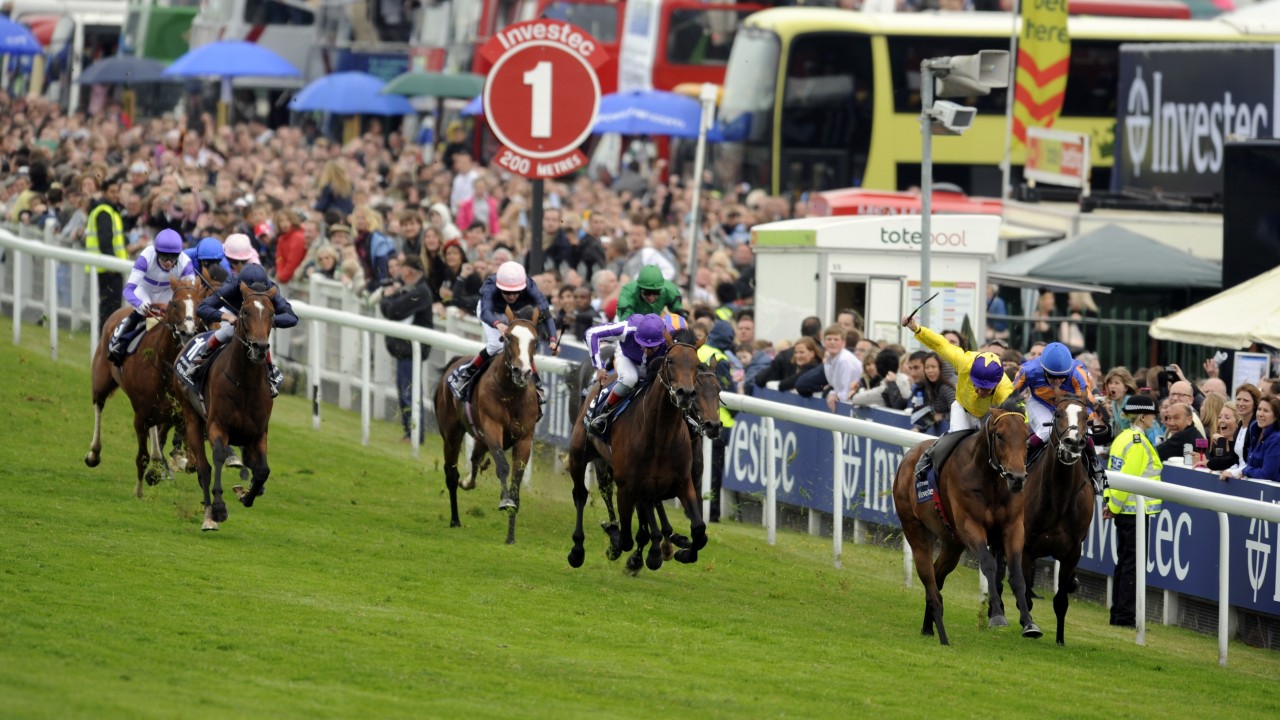
History:
James Stanley, who was the 7th Earl of Derby, on obtaining the Lordship of Mann in 1627, began horse-racing on the Langness Peninsula on the Isle of Man, providing a cup that went on to become remembered as the "Manx Derby".
The opening race of the Derby was organized in 1780 and the victory was obtained by Diomed, a horse possessed by Sir Charles Bunbury, he was then granted the prize money of £1,065.15. The initial four races were contested across 1 mile, but it was then altered to the present distance of 1½ miles in 1784. Lord Derby obtained his first victory in the race in 1787, with a colt named Sir Peter Teazle.
Last Updated: 29 September 2022

